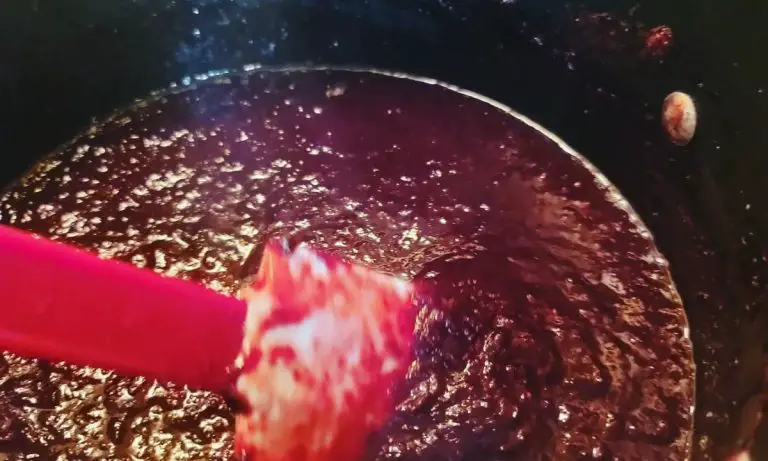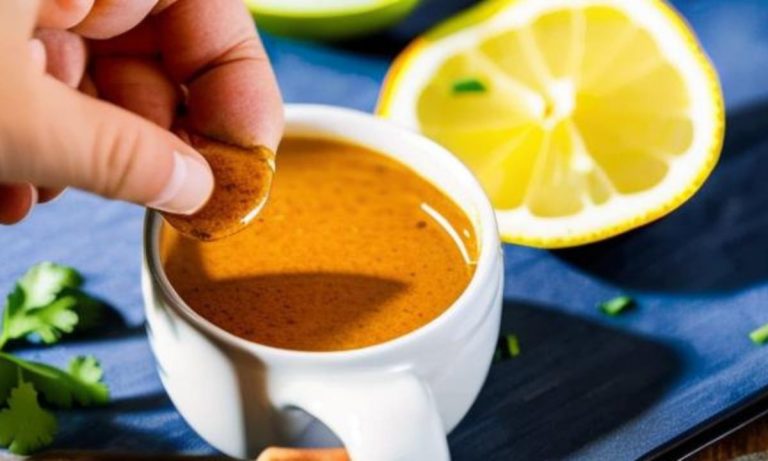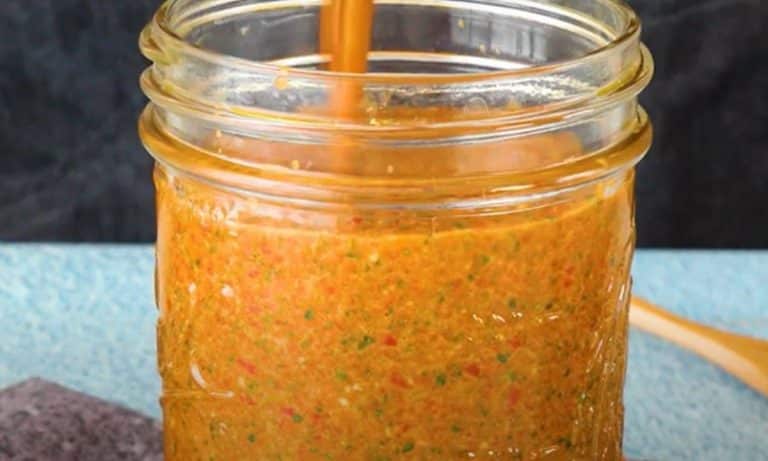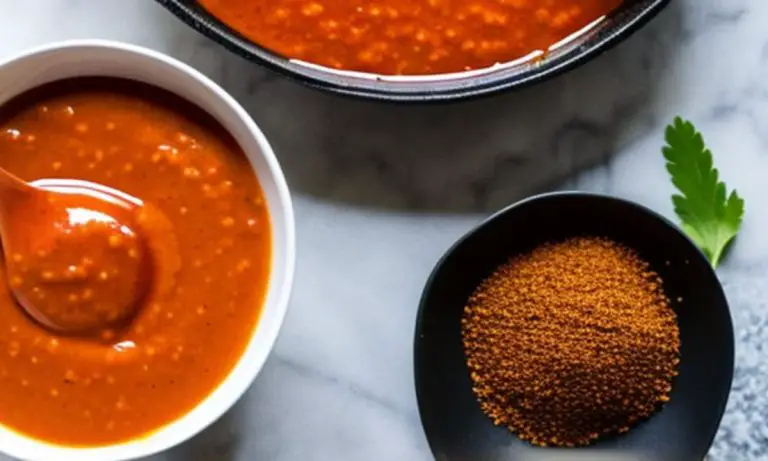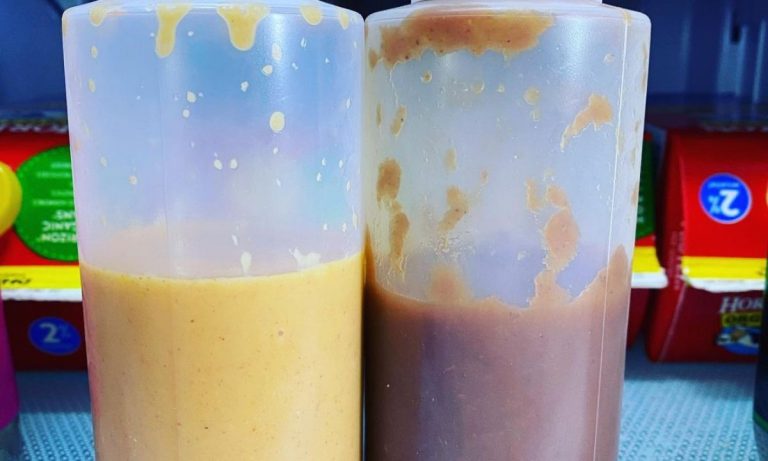Homemade Valentina Sauce Recipe
Hot sauce fan? You must try this homemade Valentina sauce recipe! The popular Mexican hot sauce brand inspired this sauce, but it’s more flavorful and unique. With a blender and a few simple ingredients, you can make this delicious sauce at home.
Favorite part? It can be mild or spicy depending on your preference. You can also use all-natural, high-quality ingredients to make the best sauce by making it yourself.
In addition to its widespread availability in the United States, the Valentina brand of Mexican spicy sauce is also quite well-liked in Mexico.
Medium-to-high heat and a tangy flavor distinguish this sauce, which is prepared by combining chile peppers, vinegar, and spices. Many foods, such as tacos, burritos, and others with a Mexican influence, benefit from its addition of flavor and spice.
Easy Valentina Sauce Recipe
Making your own Valentina sauce at home has a few advantages. In some cases, making your own sauce from scratch might save you money compared to buying it from the store, especially if you buy the ingredients in quantity.
Homemade Valentina sauce allows you to tailor the spice and flavor to your tastes. Because of this, you can make a sauce that perfectly complements your unique palate.
If you make your own sauce at home, you can control the quality of the components and ensure they are always fresh.
You can use any natural, organic, or regionally-sourced ingredients you like when you prepare your own sauce.
If you like experimenting with different flavors and ingredients in the kitchen, making your own Valentina sauce can be a fun and gratifying effort.
Valentina Hot Sauce Ingredients
So, What is Valentina sauce made of?
- 1 cup of red chili peppers (such as guajillo or ancho)
- 1 cup of apple cider vinegar
- 1 tablespoon of garlic powder
- 1 tablespoon of onion powder
- 1 tablespoon of ground cumin
- 1 teaspoon of black pepper
- 1 teaspoon of salt
Ingredient Substitution
Chile peppers are the foundation of the sauce and the source of its heat and flavor. Whether you prefer jalapenos, serranos, or habaneros, feel free to use whichever variety you like. Reduce the number of peppers used or take out the stems, seeds, and ribs to make a milder sauce. Sauces can be made hotter by using additional peppers with their seeds and ribs intact.
Incorporating garlic into the sauce is a great way to give it more flavor and depth. About two to three cloves are needed for this dish.
Vinegar: The acidity of the vinegar tempers the spiciness of the sauce and gives it a distinctive flavor. If you don’t have apple cider vinegar on hand, you can use white vinegar or even rice vinegar.
Adding salt to a sauce is an excellent way to preserve its flavor and enhance the other components’ flavors.
To help things combine properly, we’ll be using water to dilute the sauce.
How To Make Valentina Hot Sauce From Scratch?
Peppers should have their stems and seeds removed before being soaked in boiling water for around 30 minutes. As a result, the peppers will be more pliable and easier to mix.
The next step is to transfer the drained peppers to a blender or food processor and add the vinegar, garlic powder, onion powder, cumin, black pepper, and salt. The sauce will be silky after being blended.
Once the sauce has been smoothed out, put it in a pot and bring it to a boil over medium heat. The sauce should simmer on low heat for about 10 minutes while being stirred occasionally.
Turn off the heat and set aside to cool to room temperature when the sauce has simmered. Store it in the fridge for up to two weeks by transferring it to a jar or other container with a tight-fitting cover.
Variations of Valentina Sauce
The original Valentina Sauce is delicious, but there are many ways to modify it. Examples:
- Garlic Valentina Sauce: Add some minced garlic to the original recipe for a delicious garlic twist.
- Lime Valentina Sauce: Squeeze in some fresh lime juice to add a bright, citrusy flavor.
- Chipotle Valentina Sauce: Add some canned chipotle peppers in adobo sauce to the original recipe for a smoky and spicy twist.
- Mango Valentina Sauce: Puree some fresh mango with the original recipe for a fruity and spicy sauce.
- Avocado Valentina Sauce: Puree a ripe avocado with the original recipe for a creamy and spicy dip.
- Pineapple Valentina Sauce: Puree some fresh pineapple with the original recipe for a tropical and spicy sauce.
- Cilantro Valentina Sauce: Add some fresh cilantro to the original recipe for a fresh and herbaceous flavor.
What to Serve with Valentina Hot Sauce
Valentina hot sauce is a versatile condiment that pairs nicely with a wide variety of foods. Examples of such notions are:
Use Valentina sauce to add heat to your favorite tacos by adding just a few drops. To amp up the taste and intensity of your burritos, try drizzling some Valentina sauce on top.
Valentina sauce works great as a marinade or basting sauce for grilled meats like chicken, steak, and pig. Quesadillas: For a spicier take, drizzle more Valentina sauce over the top.
Scrambled eggs and omelets get a kick from a few drops of Valentina sauce. Try dipping tortilla chips in Valentina sauce or using them as a topping for your nachos.
Add a few drops of Valentina sauce to your soups and stews for some extra spice and flavor. Toss Valentina sauce with standard pizza dough or use it as a topping for a hot pie.
Use Valentina sauce to add some heat to your sandwiches. The list above is by no means exhaustive; the opportunities are vast. Try Valentina hot sauce on a variety of foods and see what you like best.
How to Store Valentina Hot Sauce?
Put your leftover Valentina spicy sauce in an airtight container with a secure lid. For safety’s sake, don’t add the sauce until you’ve made sure the jar or container is entirely dry. The sauce should be stored in the fridge with the lid tightly closed.
Refrigerating your bottle of Valentina hot sauce will extend its life and kill any bacteria that could be lurking in there. The sauce can be stored for about two to three weeks in the fridge. The sauce should be thrown out if it develops a funky smell or turns a funny color.
The sauce can be frozen if you need to store it for a long time. Put the spicy sauce in a clean, airtight container with a secure top if you want to store it in the freezer. Allow some room at the top of the container for the contents to expand.
The next step is to seal the container completely and store it in the fridge or freezer. If you freeze the sauce, it will keep for around three to four months. The sauce can be used directly from the freezer, but first needs to be thawed in the fridge or at room temperature. After thawing, the sauce may need to be stirred or shaken to recombine the ingredients.
Valentina Hot Sauce Faq’s
What is the #1 hot sauce used in Mexico?
Valentina Sauce is actually the #1 hot sauce used in Mexico, and it’s easy to see why. It’s incredibly versatile, delicious, and affordable, making it a staple in Mexican households and restaurants.
What hot sauce is similar to Valentina?
If you’re looking for a hot sauce that’s similar to Valentina, you might want to try Cholula or Tapatio. These hot sauces are also made in Mexico and have a similar flavor profile to Valentina, with a slightly different balance of heat and acidity.
Do you need to refrigerate Valentina hot sauce after opening?
While Valentina Sauce doesn’t need to be refrigerated before opening, it should be stored in the refrigerator after opening to help preserve the freshness and flavor. However, it can still be enjoyed at room temperature if you prefer.
What are the best things to put Valentina on?
Valentina Sauce is incredibly versatile and can be used in so many different ways. It’s perfect as a condiment for tacos, burritos, and other Mexican dishes, but it’s also great in marinades, sauces, and dressings. I love adding it to my scrambled eggs in the morning for an extra kick of flavor. It also pairs well with chicken, beef, seafood, and even vegetables.
More Sauce Recipes
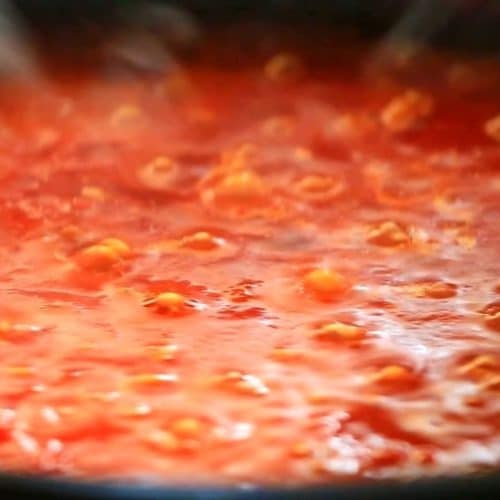
Homemade Valentina Sauce Recipe
Ingredients
- 1 cup of red chili peppers such as guajillo or ancho
- 1 cup of apple cider vinegar
- 1 tablespoon of garlic powder
- 1 tablespoon of onion powder
- 1 tablespoon of ground cumin
- 1 teaspoon of black pepper
- 1 teaspoon of salt
Instructions
- First, remove the stems and seeds from the chili peppers and soak them in hot water for about 30 minutes. This will soften the peppers and make them easier to blend.
- Next, drain the peppers and place them in a blender or food processor along with the vinegar, garlic powder, onion powder, cumin, black pepper, and salt. Blend the ingredients until they form a smooth sauce.
- Once the sauce is smooth, transfer it to a saucepan and bring it to a boil over medium heat. Reduce the heat to low and simmer the sauce for about 10 minutes, stirring occasionally.
- After the sauce has simmered, remove it from the heat and let it cool to room temperature. Transfer it to a jar or other container with a tight-fitting lid and store it in the refrigerator for up to two weeks.
I really hoped you liked this recipe for homemade Valentina hot sauce. It’s a tasty and convenient way to give many different foods a kick of flavor and spice. This recipe’s heat level may be adjusted to suit your taste, so it’s perfect whether you prefer a moderate or fiery sauce. Furthermore, there’s no greater sense of accomplishment than creating your very own sauce from scratch.
Please give this dish a shot and let me know what you think. Don’t be afraid to play about with the amount of garlic or vinegar, or the different kinds of peppers, to find what you like most. What’s great about making your own sauce is that you can customize the flavor to your liking by choosing the ingredients.
Keep your Valentina hot sauce cool or frozen to increase its shelf life. Your sauce can be kept for a few weeks in the fridge or even longer in the freezer.
I produced this Valentina hot sauce from scratch, and I hope it becomes a regular in your home. I hope you enjoy your meal!

